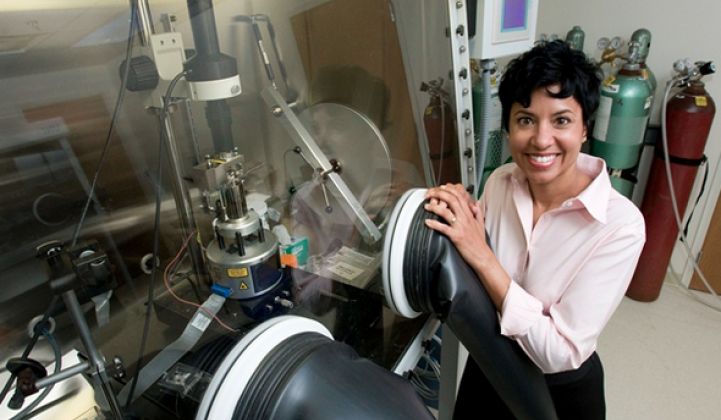Ann Arbor, Michigan-based battery developer Sakti3 has a lot of work to do if it's going to live up to the hype surrounding its latest funding round.
A $15 million investment from the iconic British vacuum cleaner firm Dyson drew attention from broadsheets including the Wall Street Journal and the Financial Times.
The Guardian echoed claims that Sakti3’s technology could double current lithium-ion battery life spans. So far, the Sakti3 team, which has been working on a solid-state lithium-ion variant since 2006, has gotten no further than a prototype. But it is said to have the highest energy density of any battery to date, at more than 1,100 watt-hours per liter.
The company has achieved this by replacing the liquid electrolyte of traditional lithium-ion batteries with a solid material that allows more energy to be stored. Solid-state batteries should also be able to be charged more quickly. And since the liquid electrolyte in a lithium-ion battery is flammable, doing away with it could improve safety.
Inventor Sir James Dyson, Dyson’s founder and chief engineer, was clearly impressed by the concept, which was named one of the world’s top ten breakthrough technologies in the MIT Technology Review in 2011.
“Sakti3 has achieved leaps in performance which current battery technology simply can’t,” Dyson said in a press release. “The Sakti3 team has amazing ambitions, and their platform offers the potential for exponential performance gains.”
According to press reports, Dyson and his research and development chief Mark Taylor spent three months evaluating Sakti3’s technology, which was spun out of the University of Michigan by a professor, Ann Marie Sastry.
Dyson’s investment means Sakti3 has secured a total of $50 million so far, including a $3 million grant, $2 million in Series A funding in 2009, $11 million in two rounds in 2010, $14 million in a Series B-1 round in 2012, and $5 million on top of Dyson’s backing this year.
Other investors include Beringea, General Motors, Khosla Ventures and Itochu, the Japanese trading giant. All this looks very encouraging. But industry watchers will be keenly aware that it takes more than a good idea and a bundle of cash to succeed in energy storage.
It is now almost a year now since LightSail Energy, a compressed air energy storage startup that also had a novel approach, talented leadership, and a pile of big-name investor cash (including money from Khosla), started running into trouble. Since then, the company has continued to make headlines -- but it is less clear when it will make money.
The battery sector has also had its fair share of failures. Valence Technology, A123, Exide, and Xtreme Power are among the high-profile names in the battery business that have run aground in recent years.
Furthermore, many of the companies that could be considered to be at the vanguard of battery technology development today, such as EOS Energy Storage or Ecoult, still have a ways to go before being commercially successful. And even if Sakti3 survives the rocky ride to commercialization, it could have plenty of competition.
Volkswagen, for example, is backing another solid-state battery hopeful, the Stanford University spinout QuantumScape, and could be set to increase its stake in the company later this year.
Meanwhile, in February, the MIT Technology Review reported that the chemical giant BASF had doubled the energy storage capacity of nickel-metal hydride batteries, and was targeting an additional eightfold improvement.
Admittedly, these companies are likely eyeing the electric vehicle market, while Dyson’s interest in Sakti3 is more likely related to consumer devices. And overall, the fact that energy storage is attracting an ever-wider range of investors is a good thing, said Logan Goldie-Scot, an associate at Bloomberg New Energy Finance.
“We’ve seen a few other examples of this,” he said, citing Apple as another consumer brand recently linked to energy storage. “The battery is becoming a major differentiating feature, whether that’s in consumer electronics, electric vehicles, or indeed in stationary applications. The implications for the industry can only be positive."
“Any developments at the consumer level are likely at some point down the line to have a stationary application as well," added Goldie-Scot.
As to whether Dyson’s high-profile bet on Sakti3 will pay off, though, it is still very much anyone’s guess. “There are a large number of pre-commercial battery manufacturers out there, and many of these have managed to raise tens and tens of millions of dollars to date,” he said. “No one is quite sure who the future winner will be.”



